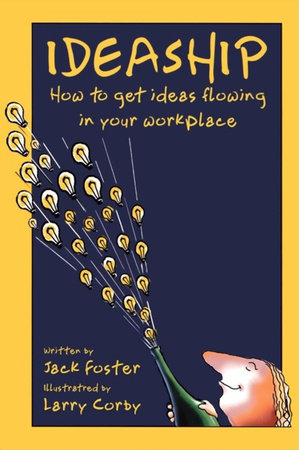Ideaship
How to Get Ideas Flowing in Your Workplace
Jack Foster, Illustrated by Larry Corby
Paperback
November 11, 2001 | ISBN 9781576751640
AmazonBarnes & NobleBooks A MillionBookshop.orgHudson BooksellersPowell'sTargetWalmart
About the Book
To create an idea-prone workforce, Foster proposes a totally new concept of leadership: "ideaship." Leaders shouldn't be spending their time obsessing over profits or sales or quality or service. Instead, they should devote most of their energies to making the office a place where creative ideas flow, where the workforce truly believes in its ability to brilliantly solve any problem put before it. Above all, where it's fun to work.
With energy and humor, Foster draws on over thirty-five years as creative director of major advertising agencies-organizations whose only purpose is to constantly generate ideas-to offer dozens of fun, fast, often surprising nuggets of practical advice on how to create an environment where innovation and fresh thinking thrive. He reveals why you should only hire people you like, insist employees take vacations whether they want to or not, why efficiency is sometimes inefficient, and how sometimes you can accomplish more by playing the fool instead of the capital L "Leader."
Ideaship spells out proven ways to encourage creativity, simply and clearly and cogently, without a lot of charts and graphs and formulas and acronyms and statistics and fillers. It flips traditional leadership on its head and shows how simple acts of compassion, trust, and generosity of spirit, as well as some seemingly zany actions, can unleash unexpected, vital bursts of creativity.




